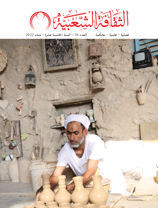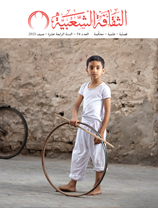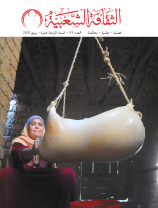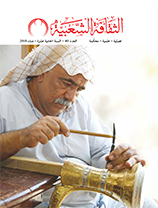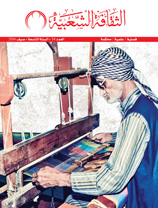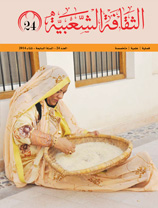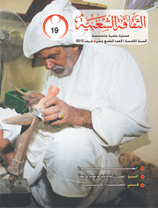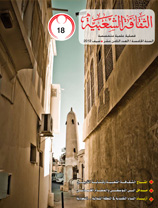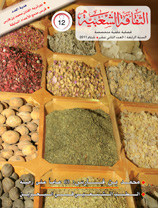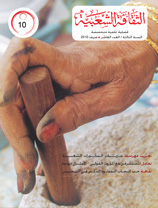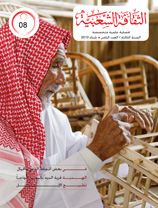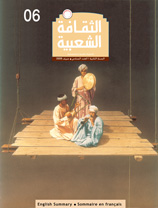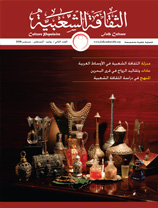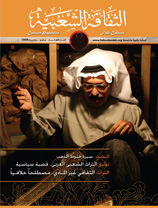The Clayey Jar: Carrier of the Nile Waters
Issue 9
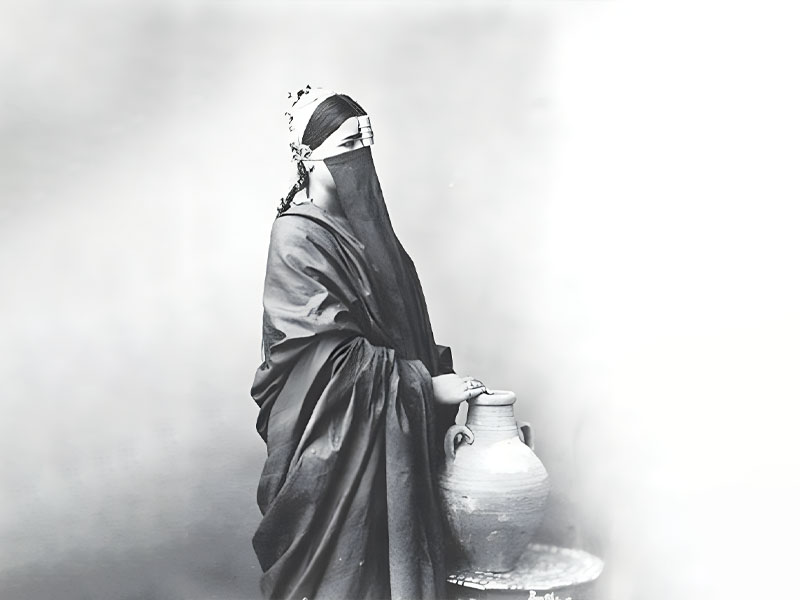
Eman Mahran(Egypt)
process. It involves a number of l skilled craftsmen and takes place primarily in a workshop. The process of preparing the clay begins by sifting the raw material in order to separate the clay from the gangue. The clay is then mixed with water. The craftsman works the clay with his feet by stepping repeatedly on it and slapping it again until it is ready for the next step. While it dries, his assistant takes broken pieces of pottery and crushes them into a fine powder. After the clay has dried, the assistant gives it and the crushed pottery to the potter, who cuts the clay into as many sections of various sizes and weights as are needed to produce the desired number of pots. Then, the potter applies the crushed pottery to the potter’s stone. Taking the stone in one hand, the potter begins shaping the pot by compressing the clay into place. This process can take up to an hour and a half, or even longer, depending on the number of pots to be fired. This artisan doesn’t work for a single pottery; he travels from workshop to workshop, turning out as many jars as are needed.In the past, the physical features of the jar, such as the handle and spout, were modified slightly to produce muddy jars in a variety of shapes and forms. The proportions of the features, relative to each other, were kept the same even as their sizes and shapes were modified. This accounts for the consistent and recognizable style of the muddy jars. The beauty of a jar standing alone, with its well proportioned features, is surpassed only by its beauty while being carried by a woman. The similarity of the two shapes is striking. This relationship has been the subject of many works of art, the most famous of which are those of the wellknown sculptor Mahmud Mukhtar. His sculptures and murals, such as those found at the statue of Saad Zaghloul in Cairo, were no doubt inspired by a woman carrying a clayey jar. Photographers have also been inspired by this image, as evidenced by the large number of photographs featuring a woman with a jar. Throughout modern history, painters have memorialized the clayey jar in works of art, just as they have recorded other ordinary events and objects used in daily life. This is true also in Egypt. Orientalists1 and scholars, who came to Egypt during the French occupation, recorded the image of woman and jar in a number of different poses. Everyone is familiar with the image of a woman balancing a jar on her head and walking in such a way that she and the jar seem to interact with each other. Likewise, there are many variations of a woman holding a jar in one arm, while gently lifting her dress ever so slightly with the other hand as if to draw the viewer’s attention to the detail of her beautiful clothing. Finally, there is the image of a woman bearing a jar filled with water. The jar is just heavy enough that when carried, its shape seems to interact with that of the woman. This relationship can only be described as “perfect harmony.” Since ancient times, the clayey jar has been commonly used by women to carry water, mainly because of its feature of being light in weight. This feature has also made it ideal for use in storing water, especially in places where there is no plumbing. Although plastic and metallic vessels have replaced the clayey jar in the area studied for this paper, elsewhere it is still the most commonly used vessel for storing and carrying water. This is no doubt because the clayey pot is light in weight and easily maneuvered. Its use is not confined, however, to storing water. It is also useful in the kitchen as a container for preserving the taste and smell of black honey, which can be stored in a clayey jar for long periods of time. It is also ideal as a container for aging and storing cheese and cheese additives, which include orange peel and cucumber peel, among others. When used to store foods that are being preserved with vegetable vinegar, the jar helps to keep the food edible for long periods of time by inhibiting the growth of the bacteria that cause food to decay. Defective clayey jars have multiple uses. They were one of the primary building materials used in home construction many decades ago in Mahroosa Center. Many homes built of broken jar pieces are still inhabited today, as they have resisted the ravages of time. Pieces of jars were used in walls, spread on rooftops and used to fill gaps between other building materials. A defective jar would not be fired. According to folk belief, it should be destroyed. There was a prevailing belief that objects made of mud or clay, such as unfired pots, were associated with magic. This belief was common among potters, who thought that if an unfired pot was sold, it might later be used by a magician to cast a spell on the potter, which would make him sick, totally paralyze him, or destroy his pottery business..
















